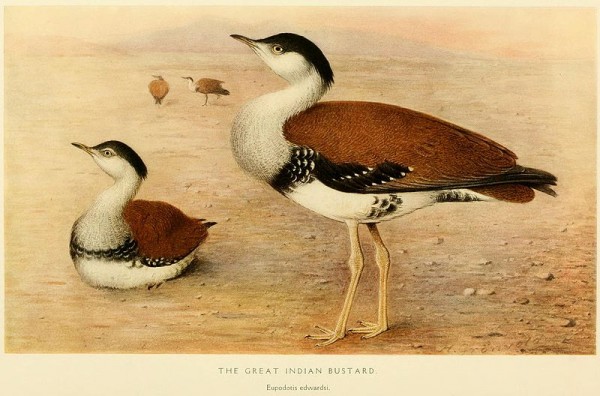Bustard and Bastard are not the same words
Critically Endangered. One vowel changed the fate of the Great Indian Bustard.
The Great Indian Bustard Ardeotis nigriceps may well go extinct because of one single vowel. See this article from Treehugger.
In 1960, the International Council for Bird Preservation met in Tokyo to encourage governments around the world to designate a national bird, particularly among species in the greatest need of protection in each country. For famed Indian ornithologist Salim Ali, the choice was clear.
“This bustard is a large and spectacular bird, indigenous to India, whose numbers, in spite of the legislative ban on its killing, are dwindling at an alarming rate due to poaching by vandalistic gunners and also encroachment upon its natural habitats,” argued Ali in 1962. “It needs an urgent nation-wide effort to save the bird from its impending doom.”
In the end, the Indian government decided to place the title of national bird, and all the protections and funding entitled therein, to the peacock. The bustard was passed over, not for a lack of worthiness, but because its name was similar to a pejorative term for an illegitimate child.
Read the rest of the Treehugger article.
One can’t really blame the Indians though. There are very few countries that have actually chosen an Endangered bird before one that is very popular among its people. The Bustard did not stand a chance against the Peacock. Instead it shows how little man in general care for threatened species.
It is unlikely that the Bustard would be able to withstand the true threats of today even if it had been designated National Bird of India. Birdlife International writes: The current key threats are habitat loss, modification and fragmentation as a result of widespread agricultural development and land-use change, particularly conversion of large areas to intensive crop cultivation, irrigation schemes (to convert areas to rice paddy), increased pesticide usage and livestock-grazing, and high levels of disturbance. Increases in the construction of irrigation canals and use of pesticides are highlighted as on-going threats in Maharashtra state. The current population is around 300 birds compared to a population around 1260 in 1969. The situation looks bleak for this fascinating bird. Check out the rocking display:

